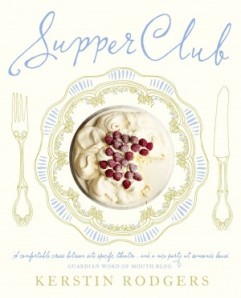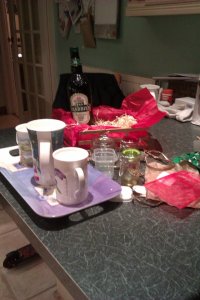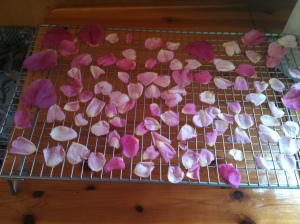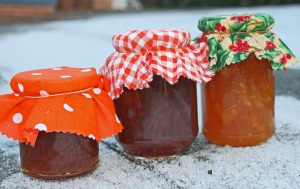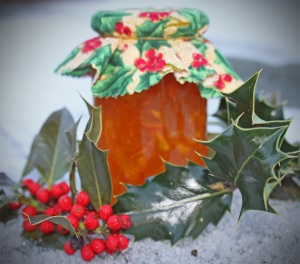My days in the Kings Nurses Homes were short lived. Officially, we had were encouraged to spend a year or at least a minimum four months living in hospital accommodation and then permission had to be sought from some senior body (not sure who now!) before moving out. Unofficially, it was possible to circumvent this process and some from my set manged to get a flat in the much sought after hospital owned but completely independent Hambledon Court. Being the rule bound creature that I was, I stayed for the four months despite being unhappy for at least half of it.
Initially all was well. Rooming at Kings meant I was in the centre of the action. Normanby College, our training school, was a five-minute walk around the corner and that was where we spent our first eight weeks for Introductory School. There were fifty-two in our intake: September ’84 Set. Kings had three intakes of that number each year. I believe less than thirty of us qualified which is a pretty high drop out rate. Over the three years, the training was gruelling and unforgiving and inevitably took its toll. But we began gently. During Introductory School, we were instructed in the arts of bed making (a three-hour lecture!). I now know that it takes two people simultaneously to make one bed and can do perfect hospital corners with fold down counterpanes of exactly a forearms depth. Of course, as beds now come with fitted sheets, duvets and there is never anyone else around to make the bed with, the beds in my house remain resolutely unmade at all times. We spent many hours injecting oranges, the rationale being that to inject a human is exactly like injecting an orange. That would be because humans are small, round, orange, with pith and leather-like skin. Of course they are. I have no idea whose idea this was but it seems to have been a common practice and I have to say that injecting people is nothing, absolutely nothing like injecting an orange. There must have been other, more relevant lectures but these are the ones that stay in mind. These and the one by the Head of Security who cheerfully informed us that one in three of us would be raped or sexually assaulted during our time in South East London. Nice.
Post directed to the Nurses Home at Kings would be written up on a blackboard next to the hospital’s main entrance for everyone entering the building to see. The recipient’s name would be scrawled with ‘Letter’ or if you were lucky ‘Parcel’ after it, and then it would need collecting from Reception. I want to write, ‘Reception Desk’ but it was more of a little booth, or kiosk, that was only open for certain hours. During a brief romance, I had been sent a single red rose, and on returning from school found my name writ large with ‘RED ROSE’ after it. Everyone in the reception area was cooing and pointing and of course, the harridan on duty insisted on reading out the card at the top of her voice, much to general entertainment of the by then considerable crowd! By the time I actually received the rose, I was as red as it.
After two months at Kings, we were given no choice but to move to one of the other, larger Nurses Homes: Franny’s or Dulwich. Dulwich was by far the more desirable so of course, I was allocated to Franny’s. To make matters worse, my set were the first to be given rooms on the coveted top floor. Traditionally this had been the domain of the Sisters who still lived in but qualified staff were no longer entitled to hospital accommodation and were being strongly encouraged to live elsewhere. Consequently, five of us were given rooms on this floor. While bigger than my room at Kings (not a difficult feat), there was nothing about this room that suggested it was desirable in any way. The home was probably built in the 1930s, was drafty, cold and characterless. The other residents on the floor made it very clear we lowly students, paper caps at that (a derogatory term referring to the head gear worn for the first six months of training), were not welcome. We were banned from using the lounge, given times we could use the kitchen and told which tiny portion of the communal fridge had been allocated for us to use. The hostility was palpable.
The Home was ‘run’ by the Home Warden, a relic of a bygone age who did not seem to realise that her age was indeed bygone. I cannot remember her name (anyone?) but she was terrifying. She resented our intrusion onto her Sisters’ floor as much, if not more, than the staff themselves. At anytime of day or night, she would barge into our rooms and clearly regarded it as her right to do so. Once she arrived with a plumber in tow to fix a leaky tap, while I was just in my underwear. Utterly unrepentant, she told me to hurry up and put something on and how could I stand there looking so indecent! My underwear wasn’t that bad, M&S terribly sensible if I remember rightly … However, if there were ever a time when such intrusion would have been welcomed, she was nowhere to be found.
It is maybe hard to imagine why such uninvited attention would be welcomed but during one very virulent bout of sickness, I would have welcomed anyone. Even her. My second ward was Dickens, a female medical ward at Dulwich Hospital run by a gangling disorganised Sister who I believe turned out to have a drink problem and was later dismissed. The ward was certainly chaotic. Like most of the Dulwich wards, it was in the Nightingale style (long room with beds either side) with glass partitions dividing part way along and with a couple of side rooms of two and one beds respectively. Part of our duties on the Early shift was to make and serve breakfast which involved porridge and boiled eggs as well as copious amounts of toast. While doing this on one occasion, I put my hand in the cutlery drawer for a knife with which to spread the toast, and felt something ticklish crawl across it. Glancing down I saw a cockroach scuttling to the back. Another time, we had pigeons flying up and down the length of the ward. So it is perhaps not any wonder that when rotavirus hit the ward, it spread with great rapidity, indiscriminately taking out staff and patients alike.
For three days I only left my room to dash to the lavatories at the end of the corridor. Even then I was so terrified of the Sisters I went armed with toilet cleaner and bleach. For three days, I saw no one. Up until then, I had not really understood the homesickness that many of the girls suffered so acutely from. Dare I say that I was not even very sympathetic? My view was that most of them were lucky to be able to pop home on days off (oh the arrogance of youth!). I needed at least three days off together in order to make the long trip home (5 hours by National Express coach, similar by train due to changes. No one wants to go to Hull!). I was fairly pragmatic about it. I had chosen to be so far away so there was little point in being upset about it. However, this was the first bout of illness I had succumbed to, and it remains one of the worst bouts of this kind of illness I have ever suffered. I desperately wanted to be at home, to be looked after, to be cared for. More than anything or anyone, I wanted my Mum. I had never felt so lonely. More than anything else, it was this experience that led me to want to move out. I wanted to distance myself from the Sisters as I did not recognise them as the ‘caring’ profession that I thought I had joined.
Having joined a local church I began to have contact with other people and professions and broadened my range of contacts. Fortunately, I soon found three others looking for a fourth to join them in a shared flat. By February 1985 I was sharing with a student physio, a second year student nurse and a qualified enrolled nurse. During the next 3 1/2 years we moved had two other flats and our flat mates changed and varied but it remained one of the best decisions I took.


